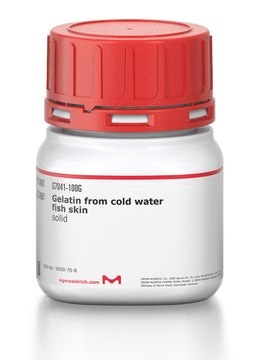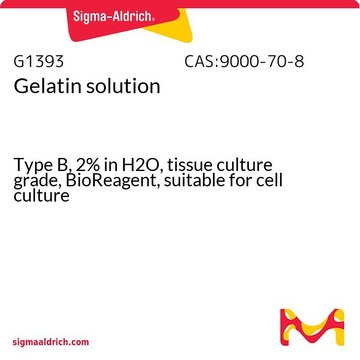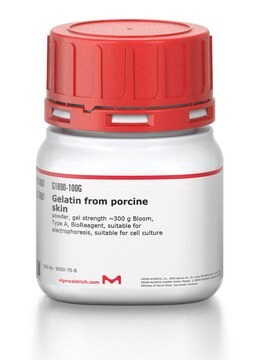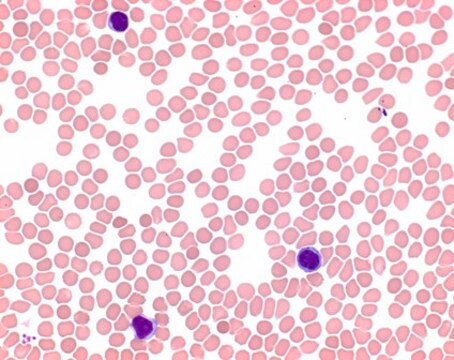935425
Gelatin from cold water fish skin
low endotoxin
Autenticatiper visualizzare i prezzi riservati alla tua organizzazione & contrattuali
About This Item
Codice UNSPSC:
51241857
NACRES:
NA.21
Prodotti consigliati
Livello qualitativo
Forma fisica
powder (chunks or fibers)
Impurezze
<10 CFU/g Bioburden (fungal)
<10 CFU/g Bioburden (total aerobic)
125 EU/g Endotoxin
Colore
white to pale yellow
Temperatura di conservazione
2-8°C
Descrizione generale
Gelatin is widely used for tissue engineering and 3D Bioprinting applications. Gelatin is derived from natural extracellular matrix (ECM) components. Due to its low cost, abundance, and retention of natural cell binding motifs, gelatin has become a highly sought material for tissue engineering applications. While gelatin from porcine skin is known for its thermoreversible gelling properties, Gelatin from cold water fish skin has low gelling and melting points. This gelatin will not gel at 10°C, hence they do not have bloom strength. This unique gelatin property makes this an attractive biomaterial which are hindered by the higher thermogelation property of porcine skin such as vat-polymerization based bioprinting and microfluidics.
Applicazioni
- Hydrogels
- Tissue engineering
- Bioprinting
- Drug delivery system
Caratteristiche e vantaggi
- Naturally derived polymer
- Low gelling and melting points
- Thermoreversible gelling properties
- Low endotoxin and low bioburden
Prodotti correlati
N° Catalogo
Descrizione
Determinazione del prezzo
Codice della classe di stoccaggio
11 - Combustible Solids
Classe di pericolosità dell'acqua (WGK)
nwg
Punto d’infiammabilità (°F)
Not applicable
Punto d’infiammabilità (°C)
Not applicable
Scegli una delle versioni più recenti:
Certificati d'analisi (COA)
Lot/Batch Number
Ci dispiace, ma al momento non ci sono COA disponibili online per questo prodotto.
Se ti serve aiuto, non esitare a contattarci Servizio Clienti
Possiedi già questo prodotto?
I documenti relativi ai prodotti acquistati recentemente sono disponibili nell’Archivio dei documenti.
Svetlana R Derkach et al.
Polymers, 12(12) (2020-12-24)
This review considers the main properties of fish gelatin that determine its use in food technologies. A comparative analysis of the amino acid composition of gelatin from cold-water and warm-water fish species, in comparison with gelatin from mammals, which is
Hee Jeong Yoon et al.
PloS one, 11(10), e0163902-e0163902 (2016-10-11)
Gelatin methacryloyl (GelMA) is a versatile biomaterial that has been used in various biomedical fields. Thus far, however, GelMA is mostly obtained from mammalian sources, which are associated with a risk of transmission of diseases, such as mad cow disease
Il team dei nostri ricercatori vanta grande esperienza in tutte le aree della ricerca quali Life Science, scienza dei materiali, sintesi chimica, cromatografia, discipline analitiche, ecc..
Contatta l'Assistenza Tecnica.








